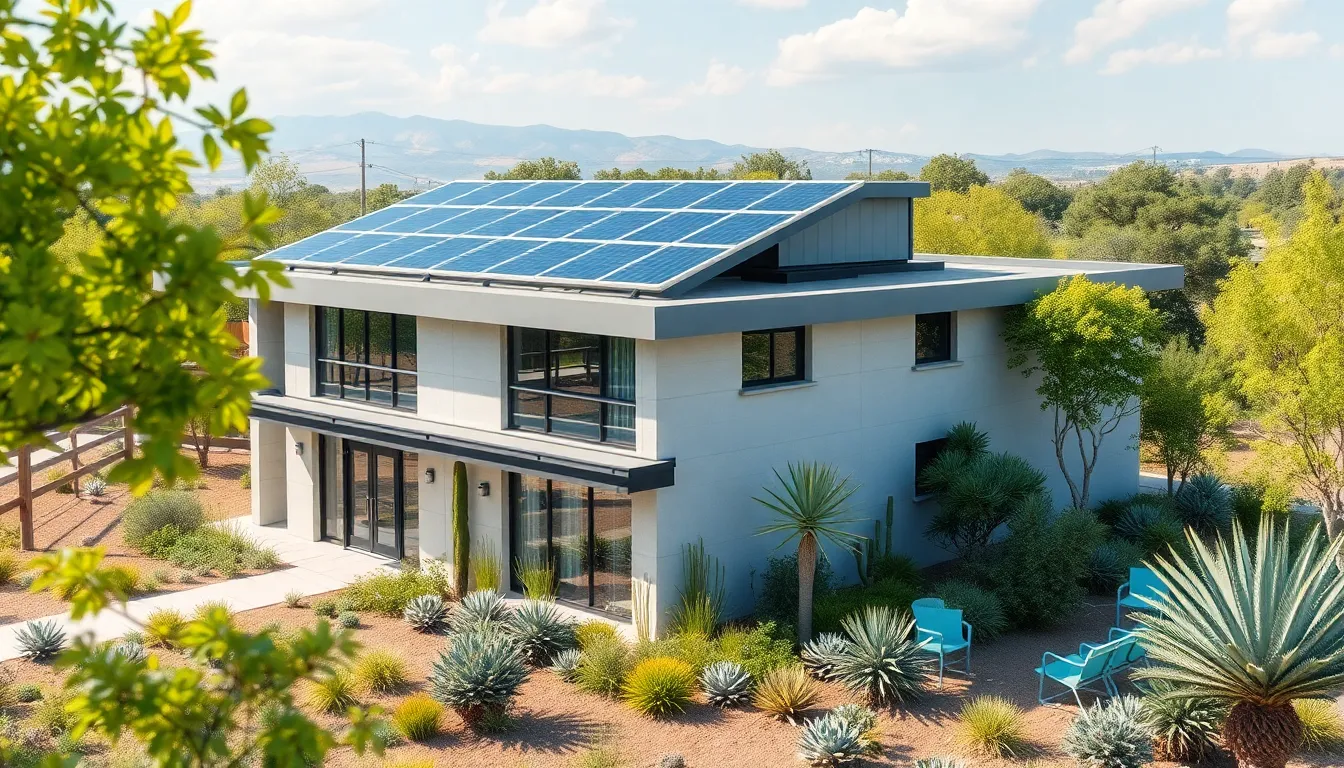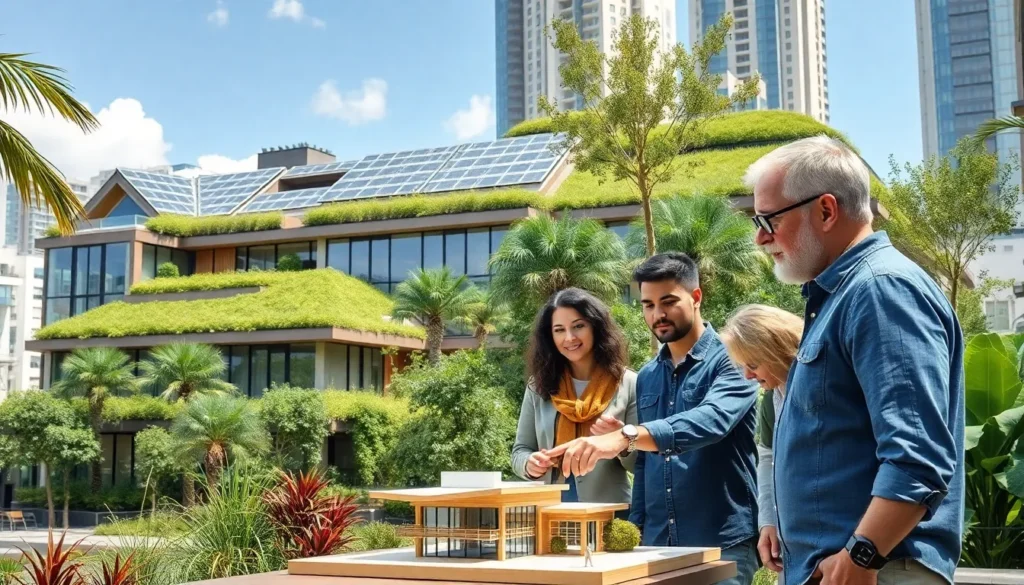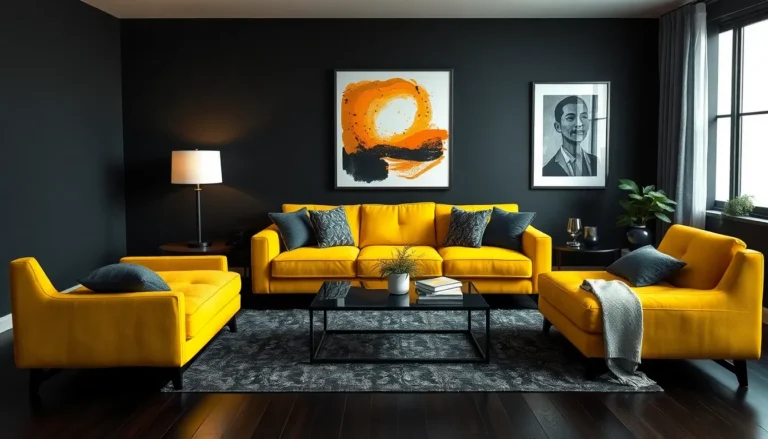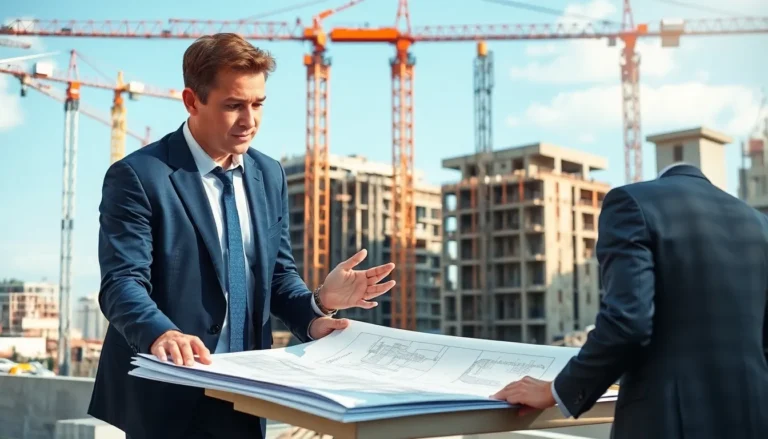Table of Contents
ToggleIn an era where environmental concerns dominate global conversations, sustainable architecture offers a beacon of hope. This innovative approach not only prioritizes eco-friendly materials and energy efficiency but also harmonizes with nature, creating spaces that nurture both people and the planet. As urban areas expand and climate change looms, architects and builders are rethinking traditional designs to minimize their ecological footprint.
Sustainable architecture goes beyond aesthetics; it’s a commitment to designing buildings that contribute positively to their surroundings. By integrating renewable resources and smart technologies, these structures not only reduce waste but also enhance the quality of life for their inhabitants. As the world shifts towards more responsible living, understanding the principles of sustainable architecture becomes essential for anyone interested in the future of our cities and communities.
Overview of Sustainable Architecture
Sustainable architecture integrates principles that promote environmental stewardship and resource efficiency. It encompasses a variety of design strategies aimed at minimizing energy consumption, reducing waste, and utilizing renewable resources. Key components include the selection of eco-friendly materials, incorporating natural lighting, and designing buildings that enhance natural ventilation.
Architectural designs focus on harmony with the environment. Orientation and landscape integration enhance energy efficiency and reduce the carbon footprint. Green roofs and walls contribute to biodiversity while offering improved insulation. Furthermore, innovative technologies, such as solar panels and rainwater harvesting systems, play a vital role in sustainable buildings.
Sustainable architecture also prioritizes the well-being of occupants. Elements like non-toxic materials, daylight access, and air quality management foster healthier indoor environments. Spaces designed with sustainability in mind not only address ecological concerns but also improve the quality of life for residents.
In recent years, sustainable architecture has gained widespread recognition. Governments and organizations advocate for sustainable building practices through incentives and certifications, such as LEED (Leadership in Energy and Environmental Design). As the demand for green buildings grows, architects are increasingly adopting sustainable designs that align with the pressing need for environmental responsibility.
Key Principles of Sustainable Architecture

Sustainable architecture incorporates essential principles aimed at reducing environmental impact. These principles guide architects in creating designs that promote efficiency and resource conservation.
Energy Efficiency
Energy efficiency focuses on minimizing energy consumption within buildings. Strategies include utilizing high-performance insulation, energy-efficient appliances, and smart technologies like programmable thermostats. Designers maximize natural light through window placement and glass selection, reducing reliance on artificial lighting. Incorporating renewable energy sources, such as solar panels and wind turbines, further decreases dependence on fossil fuels, lowering overall energy costs for occupants.
Sustainable Materials
Sustainable materials involve selecting resources that minimize ecological footprints. Architects often choose recycled, reclaimed, or rapidly renewable materials like bamboo and cork. These materials reduce waste and support sustainable production practices. Additionally, using non-toxic finishes and low-VOC (volatile organic compounds) paints contributes to healthier indoor environments. Prioritizing local materials decreases transportation emissions and strengthens regional economies.
Water Conservation
Water conservation practices address the efficient use of water resources. Rainwater harvesting systems allow the collection and reuse of precipitation for irrigation and non-potable purposes. Incorporating drought-resistant landscaping, known as xeriscaping, reduces water usage while maintaining aesthetic appeal. Installing low-flow fixtures in bathrooms and kitchens further decreases water waste. These strategies contribute to sustainability by preserving valuable water resources in urban areas.
Benefits of Sustainable Architecture
Sustainable architecture offers various benefits that positively impact the environment, economy, and society. Understanding these advantages emphasizes the importance of adopting eco-friendly building practices.
Environmental Impact
Sustainable architecture significantly minimizes ecological footprints. It reduces greenhouse gas emissions through energy-efficient designs and the use of renewable energy sources. According to the U.S. Green Building Council, green buildings can save up to 30% in energy costs compared to traditional structures. Sustainable practices, such as utilizing recycled materials and optimizing water usage, further contribute to waste reduction. Enhanced natural landscapes also promote biodiversity, creating healthier ecosystems.
Economic Advantages
Sustainable architecture presents substantial financial benefits. Initial investments in eco-friendly designs often lead to lower operational costs over time. According to the World Green Building Council, green buildings typically experience a 10% increase in asset value and 5-10% lower operating expenses. Reduced energy bills and maintenance costs foster long-term savings for owners and tenants. Additionally, government incentives and certification programs like LEED can provide financial advantages and increase property marketability.
Social Benefits
Sustainable architecture enhances occupant well-being and community engagement. Buildings designed for natural light and airflow significantly improve indoor air quality, benefiting residents’ health. Access to green spaces fosters social interaction and contributes to mental well-being. Studies show that occupants of sustainable buildings report higher satisfaction levels, which positively impacts productivity and overall quality of life. Engaging local communities in the design process cultivates a sense of ownership and pride, strengthening neighborhood ties.
Challenges in Implementing Sustainable Architecture
Sustainable architecture encounters several challenges that can hinder its widespread application. Key obstacles include financial constraints and regulatory limitations that complicate the adoption of eco-friendly practices.
Cost Considerations
Cost considerations significantly impact the implementation of sustainable architecture. Initial investments in energy-efficient systems, sustainable materials, and advanced technologies often exceed traditional building costs. Architects and developers face difficulties in justifying higher upfront expenses, despite long-term savings from reduced energy bills and maintenance. In a survey conducted by the National Association of Home Builders, 70% of builders cited high costs as a primary barrier to green building adoption. Additionally, financing options for sustainable projects can be limited, resulting in further challenges for developers seeking funding.
Policy and Regulation Issues
Policy and regulation issues pose substantial challenges for sustainable architecture. Inconsistent building codes and zoning regulations often fail to accommodate or incentivize sustainable practices. Many municipalities do not offer clear guidelines for eco-friendly construction, leading to confusion among architects and developers. Regulatory hurdles, such as lengthy approval processes and restrictive land-use policies, can delay project timelines and increase costs. Furthermore, a lack of incentives or subsidies at the federal, state, or local level diminishes motivation for embracing sustainable architecture. Addressing these barriers requires collaboration between government agencies, industry stakeholders, and community advocates to create supportive frameworks for sustainable building practices.
Future Trends in Sustainable Architecture
Emerging trends in sustainable architecture focus on innovative design and advanced technology, addressing the evolving demands of environmentally conscious urban living.
Innovations in Design
Innovations in sustainable design prioritize resilience and flexibility. Modular construction techniques enable efficient building processes while minimizing material waste. Green roofs and vertical gardens integrate nature within urban spaces, promoting biodiversity and improved air quality. Passive design strategies, such as orientation and shading, optimize natural lighting and temperature control, reducing reliance on artificial energy sources. Biophilic design enhances occupant well-being by incorporating elements of nature into interiors, fostering a connection to the environment. The use of locally sourced and reclaimed materials not only cuts transportation emissions but also supports regional economies.
Technology Integration
Technology integration plays a vital role in advancing sustainable architecture. Smart building systems utilize sensors and automation to enhance energy efficiency, monitor resource consumption, and optimize indoor environments. Renewable energy technologies, such as solar panels and geothermal heating, provide clean energy solutions that significantly lower operational costs. Building Information Modeling (BIM) streamlines the design process, allowing architects to analyze environmental impacts and material use effectively. Additionally, innovative waste management technologies, including composting systems and water recycling units, contribute to reducing overall resource consumption and fostering sustainability within communities.
Sustainable architecture represents a pivotal shift in how buildings are designed and constructed. By embracing eco-friendly materials and innovative technologies, it addresses the pressing challenges of climate change and urbanization. The commitment to energy efficiency and resource conservation not only benefits the environment but also enhances the quality of life for occupants.
As architects continue to prioritize sustainable practices, the potential for creating healthier and more resilient communities expands. The collaboration among various stakeholders will be vital in overcoming existing challenges and fostering a culture of environmental responsibility. With ongoing advancements and growing support for green initiatives, the future of architecture looks promising, paving the way for a sustainable and harmonious coexistence with nature.







